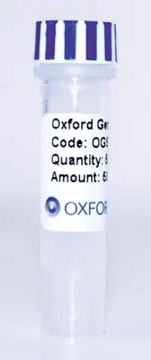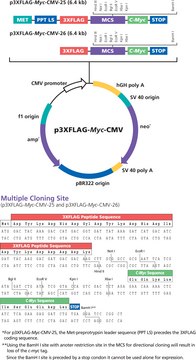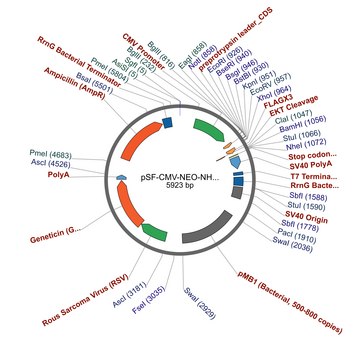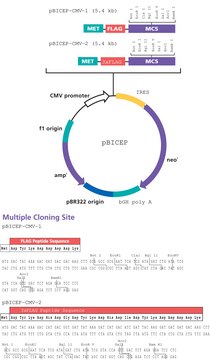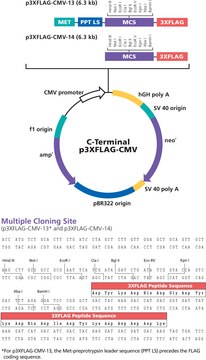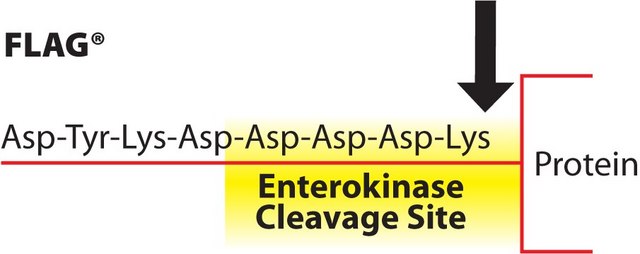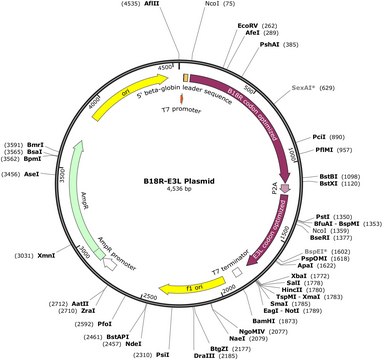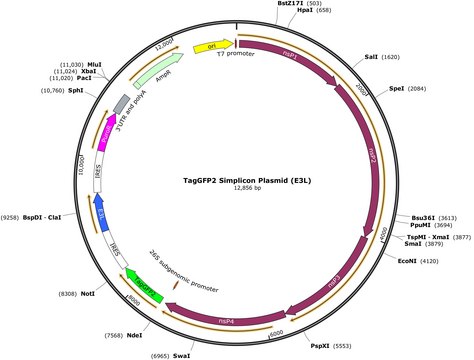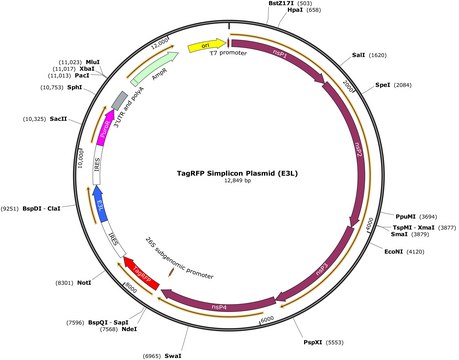E9783
p3XFLAG-CMV™-9 Expression Vector
Shuttle vector for transient or stable expression of secreted N-terminal 3xFLAG fusion proteins
About This Item
Recommended Products
tag
3X FLAG tagged
grade
Molecular Biology
form
buffered aqueous solution
shipped in
dry ice
storage temp.
−20°C
1 of 4
This Item | SCR728 | SCR725 | SCR726 |
|---|---|---|---|
| technique(s) nucleic acid detection: suitable (RNA) | technique(s) nucleic acid detection: suitable (RNA) | technique(s) nucleic acid detection: suitable (RNA) | technique(s) nucleic acid detection: suitable (RNA) |
General description
p3XFLAG-CMV-9 expression vector is a shuttle vector for E. coli and mammalian cells. Efficiency of replication and genomic integration is optimal when using an SV40 T antigen expressing host, such as COS cells. A related vector, p3XFLAG-CMV-3, has been used for stable transfection of HEK 293 cells. Efficiency of replication and genomic integration is optimal when using an SV40 T antigen-expressing host.
The p3XFLAG-CMV-7-BAP Control Plasmid is a 6.2 kb derivative of pCMV5 used for transient intracellular expression of N-terminal 3XFLAG bacterial alkaline phosphatase fusion protein in mammalian cells. The vector encodes three adjacent FLAG epitopes (Asp-Tyr-Lys-Xaa-Xaa-Asp) upstream of the multiple cloning region. This results in increased detection sensitivity using ANTI-FLAG M2 antibody. The third FLAG epitope includes the enterokinase recognition sequence, allowing cleavage of the 3XFLAG peptide from the purified fusion protein.
Vector Maps and Sequences
Components
- p3XFLAG-CMV™-9 Expression Vector 20 μg (E4276) is supplied as 0.5 mg/ml in 10 mM Tris-HCl (pH 8.0) with 1 mM EDTA.
- p3XFLAG-CMV™-7-BAP Control Plasmid 20 μg (C7472) is supplied as 0.5 mg/ml in 10 mM Tris-HCl (pH 8.0) with 1 mM EDTA.
Principle
Legal Information
Storage Class Code
10 - Combustible liquids
Regulatory Information
Choose from one of the most recent versions:
Already Own This Product?
Find documentation for the products that you have recently purchased in the Document Library.
Our team of scientists has experience in all areas of research including Life Science, Material Science, Chemical Synthesis, Chromatography, Analytical and many others.
Contact Technical Service